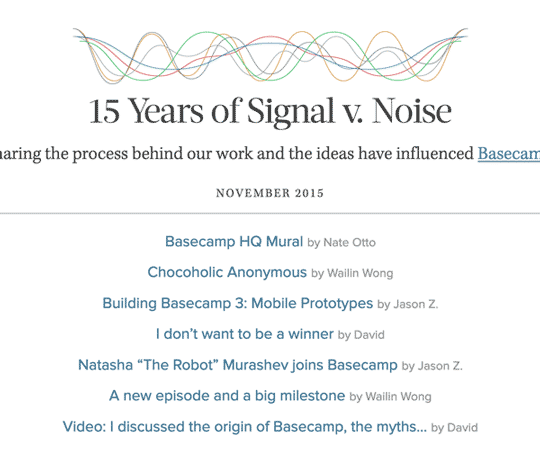Signal v. Noise is closed.
It’s been a wonderful run, but we decided it was time to do something different. With the launch of HEY World, everyone at Basecamp who was writing for SvN now has their own blog. Of course, we’ll keep the lights on here until the end of the internet. Enjoy exploring a decade plus of SvN:
Where you can follow us now:
Jason Fried is on HEY World and Twitter.
DHH is on HEY World and Twitter.
You can also follow Basecamp on Twitter.
P.S. don’t forget to check out our products, Basecamp & HEY.


